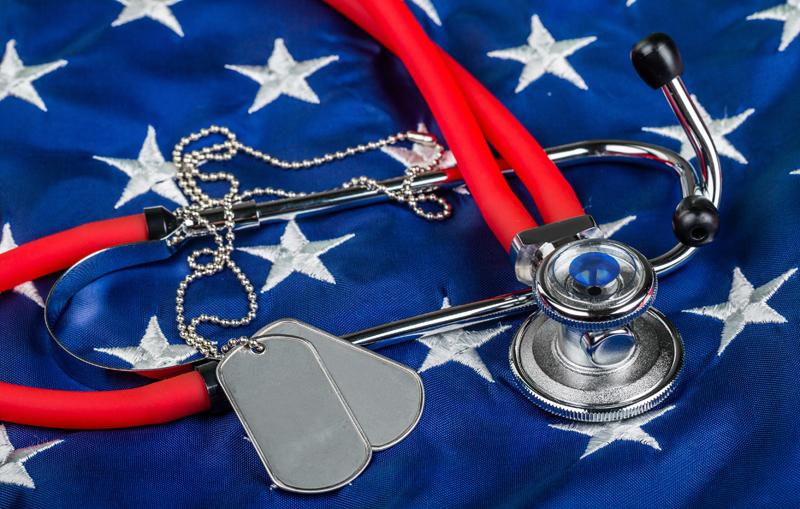Jun 20
2023
7 Ways Tech Is Empowering Veterans To Receive The Care They Need

Veterans are the brave individuals who have dedicated their lives to serving their country. They have made immense sacrifices, risking life and limb to protect our freedoms. However, transitioning back to civilian life can be challenging for many veterans, especially when accessing the care they need.
Fortunately, technological advancements have opened up new avenues to support and empower veterans throughout their healthcare journey. From telehealth solutions to wearable devices, technology is revolutionizing the way veterans navigate qualifying for disability, receive care and enhance their overall well-being.
Robotics and Prosthetics for Enhancing Mobility
Advancements in robotics and prosthetics have significantly improved the quality of life for veterans with limb loss or mobility impairments. Cutting-edge prosthetic limbs, equipped with advanced sensors and actuators, closely mimic natural movements, allowing veterans to regain their independence and engage in daily activities more easily.
Additionally, robotic exoskeletons support and assist individuals with spinal cord injuries, enabling them to stand, walk, and even participate in rehabilitative exercises. These technological innovations restore physical abilities and boost veterans’ confidence and mental well-being.
Telehealth for Remote Access
One of the significant challenges veterans face is limited access to healthcare, especially in rural areas. Many veterans live far away from medical facilities, making it difficult and time-consuming to receive necessary care. However, technology has bridged this gap through telehealth solutions. Telehealth enables veterans to consult with healthcare professionals remotely, eliminating the need for extensive travel. Through video conferencing and virtual appointments, veterans can receive timely medical advice, access mental health counseling, and monitor chronic conditions without leaving their homes.
Wearable Devices for Health Monitoring
Wearable devices have become increasingly popular among veterans as they provide real-time health monitoring and valuable insights into their well-being. From smartwatches to fitness trackers, these devices can track vital signs, activity levels, and sleep patterns. For veterans managing chronic conditions, such as diabetes or cardiovascular diseases, wearable devices offer a convenient way to monitor their health, detect early warning signs, and adhere to treatment plans. These devices can also encourage veterans to stay active and maintain a healthy lifestyle, improving overall health outcomes.
Electronic Health Records for Seamless Care
In the past, veterans faced challenges when transferring their medical records between different healthcare providers. This often resulted in fragmented care and delayed treatment. However, adopting electronic health records (EHRs) has transformed the healthcare landscape for veterans. EHRs enable seamless sharing of medical information between healthcare facilities within the Veterans Health Administration (VHA) network. This ensures that veterans’ healthcare providers have access to their complete medical history, enabling more accurate diagnoses, effective treatment plans, and improved care coordination.
Artificial Intelligence for Diagnosis and Treatment
Artificial intelligence (AI) is revolutionizing the healthcare field by providing powerful tools for diagnosis and treatment. AI algorithms can analyze vast amounts of medical data, assisting healthcare professionals in making accurate and timely diagnosis. For veterans, AI-powered diagnostic tools can help identify conditions such as post-traumatic stress disorder (PTSD) or traumatic brain injury (TBI) early on, leading to appropriate interventions and improved outcomes. Additionally, AI-based treatment planning can optimize medication regimens and therapy options, tailoring them to individual veterans’ needs.
Virtual Reality for Rehabilitation and Therapy
Virtual reality (VR) technology has become a powerful tool in veteran rehabilitation and therapy programs. For veterans with physical injuries or mental health conditions, VR offers immersive experiences that aid their recovery journey. VR simulations can recreate real-life scenarios, allowing veterans to practice and regain lost skills. It also provides a safe environment for exposure therapy, helping veterans cope with PTSD and anxiety disorders. VR-based rehabilitation and therapy have shown promising results in improving veterans’ quality of life and reintegration into society.
Mobile Applications for Self-Management
Mobile applications, commonly known as apps, empower veterans to take charge of their health and self-manage their conditions. There is a wide range of mobile apps specifically designed for veterans, addressing various aspects of their well-being. These apps provide resources for mental health support, meditation and relaxation techniques, fitness programs, and even tools for tracking medication adherence. By having these resources readily available on their smartphones, veterans can actively engage in their healthcare, monitor their progress, and access support whenever and wherever they need it. These apps serve as personalized companions, empowering veterans to lead healthier, more fulfilling lives.
Technology is pivotal in empowering veterans to receive the care they need, facilitating their transition back to civilian life. The above advancements provide convenience, efficiency, and personalized support, breaking down barriers and ensuring veterans receive timely and comprehensive care. As technology continues to evolve, the possibilities for further empowering veterans and improving their healthcare outcomes are limitless. Healthcare providers, policymakers, and technology developers need to continue collaborating to harness the full potential of tech-driven solutions and honor the sacrifices made by our veterans. Together, we can create a future where technology serves as a powerful ally in ensuring that veterans receive the care they deserve.